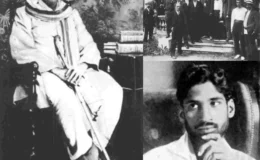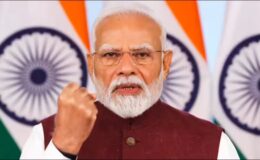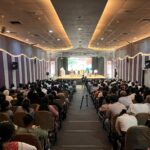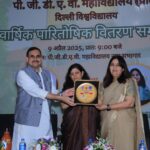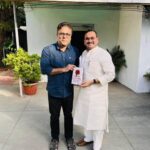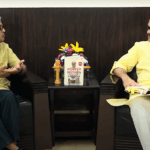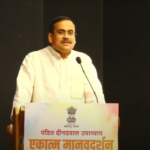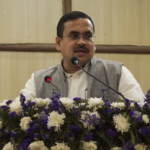THE LEFT’S BLOOD-SOAKED LEGACY
- By : Anirban Ganguly
- Category : Articles
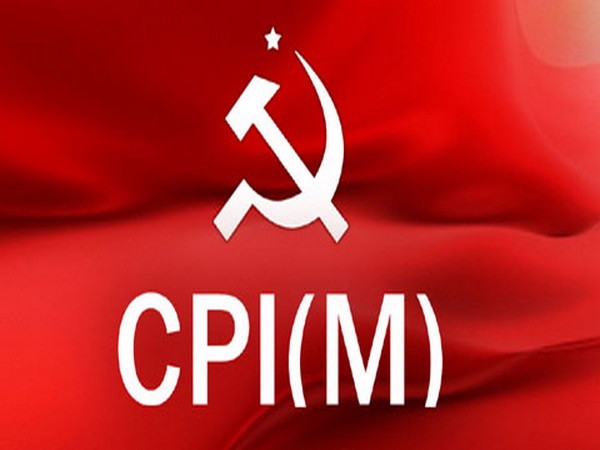
It is ironical that the Communist Party of India (Marxist) and others of its ilk are leading the ‘intolerance’ brigade against the Government, given that they are the ones who ran one of the most violent and intolerant ‘proletarian’ regimes in post-independent India
It was ironical to see and hear Communist Party of India (Marxist) leaders refer to the rise of intolerance in the country under Prime Minister Narendra Modi. Ironical because the CPI(M), the party to which West Bengal’s Mohammed Selim belongs, ran one of the most violent and intolerant ‘proletarian’ Governments in post-independent India’s democratic history. So intolerant was the CPI(M)-led Left Front Government of West Bengal, that, by the time it was voted out of power in 2011, it had not only shot at and killed hapless Hindu refugees who had sought shelter in the Sunderbans from persecution in Bangladesh but had truly inaugurated an era of blood and retribution. In 1979, Comrade Jyoti Basu’s Government hunted down, shot and threw to the sharks hundred of refugees in the Sunderban island of Marichjhapi. Most of those shot at by the ‘tolerant’ CPI(M) regime belonged to the Namasudra community a backward and the poor section in Bangladesh.
In between, from 1979 to 2007, other ghastly acts took place under the proletarian Government often with its active connivance. Some of these would be worth recalling simply because the CPI(M) and its band of captive intellectuals have long succeeded in obfuscating these issues and pretending to be the upholders of the ‘Idea of India’. The incidents and examples of intolerance and mockery of the democratic process under CPI(M) rule are many but it would suffice to point to a few.
In 1982, Ananda Margi monks, for example, were doused with gasoline and burnt in broad daylight in the Bijon Setu massacre case where CPI(M) leaders egged on a mob of cadres to commit the act of public murder. One does not know whether there were intellectuals who asked for the then Prime Minister’s resignation, or asked her to make a statement condemning the incident, or whether groups of intellectuals wrote to the then President of India about the rise of intolerance under Mr Rahul Gandhi’s grandmother’s rule. The entire episode was hushed up and the involved CPI(M) leaders were never brought to book.
It was in March 1984 that the Deputy Commissioner of Police, Calcutta Port, a 35-year-old daring IPS officer Vinod Mehta, was butchered to death and his body thrown in a drain just because he dared to challenge and tried to bust a mafia gang supported by politicians and ministers of the ruling party. No signature campaign took place in support of Mehta, no letters of intolerance signed, no one even bothered to see how his 31-year-old wife and nine-year-old boy fared.
No one, least of all the intellectuals of the proletariat, talked of how the law and order under a communist regime was deteriorating. Comrade Jyoti Basu in West Bengal and his counterpart at the Centre, Indira Gandhi, both having professed to have absorbed their political wisdom at the feet of the legendary Harold Laski, were forgiven and their faults or acts of omission, if any, were overlooked. Their Laskian pedigree and London sojourn shielded them from any fault such faults could be only conjured and made to stick on those who have come up from the ranks of tea sellers.
In course of time, the proletarian Government spawned the most dreaded cadre-based and lumpen-lead militia —the Harmad Bahini for terrorising citizens who held opposing political views and for intimidating members of the opposition parties.
While the Congress in West Bengal looked the other way, with some of its leaders actively pushing the Communists case at the Centre, the people of the State wallowed and suffered a seemingly unending period of violence and deprivation. In November 2007, the CPI(M) and its intellectuals who have now been howling “intolerance” cowered before Islamist lumpens and drove Taslima Nasreen out of Kolkata, allowing parts of the famed liberal city to be held hostage to Islamists baying for the author’s blood.
The pinnacle of intolerance was reached when the CPI(M) Government having derived its political legitimacy from the strength of farmers, having built an entire political discourse centering on farmers fired and killed farmers who were trying to protect their land in Nandigram in early 2007. Those who witnessed that mindless and barbarically intolerant act recall how hapless farmers were mowed down just because they dared to protect their land against encroachment.
Interestingly, for those who care to remember, in 2007 when these farmers were shot and killed, the CPI(M) was a partner of the ruling coalition at the centre the UPA1 led by Ms Sonia Gandhi and the Congress. Of course, there were no intolerance harangues then and no one asked the then Prime Minister to resign or take responsibility for the deteriorating law and order, no coalition partner asked the CPI(M) to quit the coalition treating it as a political pariah. The communists and the Congress were absolved of all wrongdoing.
In fact, the communists in India and their card-carrying intellectuals have never forsaken Stalinism or Stalinist methods, when cornered and politically out of steam, they invariably revert and fall back on Stalinist degrees in order to salvage themselves. It does not matter if, in the process, they trample upon, asphyxiate and throttle the proletariat.
Historically, the communists have been and continue to be the most intolerant political element in India. From actively opposing the Quit India movement to collaborating with the British colonial administration to colluding with the Muslim League in its demand for Pakistan, the communists have acted as one of the greatest disruptive forces ever since their formation took shape in India. One needs to remind them of their role during Muslim League announced Direct Action when many of their cadres and leaders either hid or actively sided with MA Jinnah’s lumpens in implementing his call for ‘direct action’ in Kolkata of August 1946.
Interestingly, any Indian leader who displayed great wisdom and sagacity never seemed to have trusted the communists, and found the latter to be highly intolerant and inimical to Indian interest and well-being. A few examples here may be of interest.
In the evening of August 15, 1947, on the day India became independent, Sri Aurobindo’s Ashram in Pondicherry was violently attacked by a large mob of political hooligans, led by the communists, who accused him of collaborating with the French in trying to keep the enclave under French rule. Such perfidy — accusing one of the greatest revolutionary nationalists of the modern era of collaborationism can only be produced in the intellectual mangers of communism. With Sri Aurobindo inside his Ashram, this communist-led mob attacked Ashram buildings, set fire to a number of them and even succeeded in murdering a close attendant of the Master. In a letter to The Statesman a few days later, Sri Aurobindo observed how among the sections of people “here who are violently opposed to the existence of the Ashram” the “communists” were an active lot.
DP Mishra, veteran freedom-fighter and sometime Chief Minister of Madhya Pradesh, whose life Mr Gandhi would do well to study, observed how in the aftermath of independence, at a time of great unrest, communists “found their opportunity and by a series of bloody insurrections tried to smash” the fledgling Republic of India. “They tried to form”, recalled Mishra, “shock brigades and guerilla squads and train their workers to raid police stations and ambush police parties…They planned to develop a mass movement by their violent activities throughout the country”.
On taking over the premiership of Madras in 1952, C Rajagopalachari declared in the floor of the Assembly, “I am here to save my country from the traps of and the dangers of the Communist Party. That is my policy from A to Z. I am placing my cards on the table. I am your enemy number one, and may I say you are my enemy number one. This is my policy.”
One would hardly accuse Rajaji of being intolerant; he had India’s interest in mind and exuded a one-pointed approach in safeguarding it. Such leaders have always faced the communist canard of being intolerant Mr Modi is not the first one to face that false and diversionary charge.

